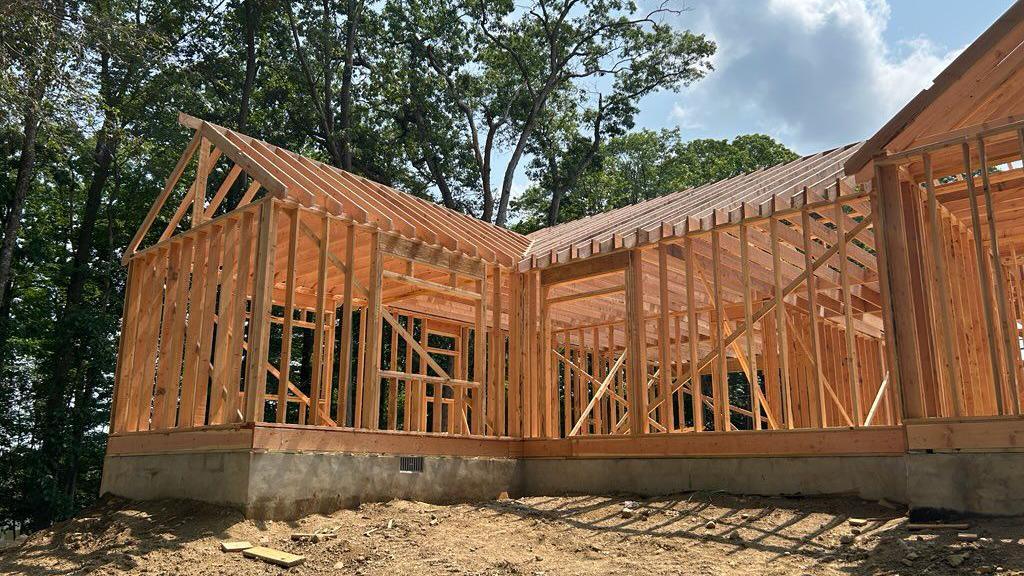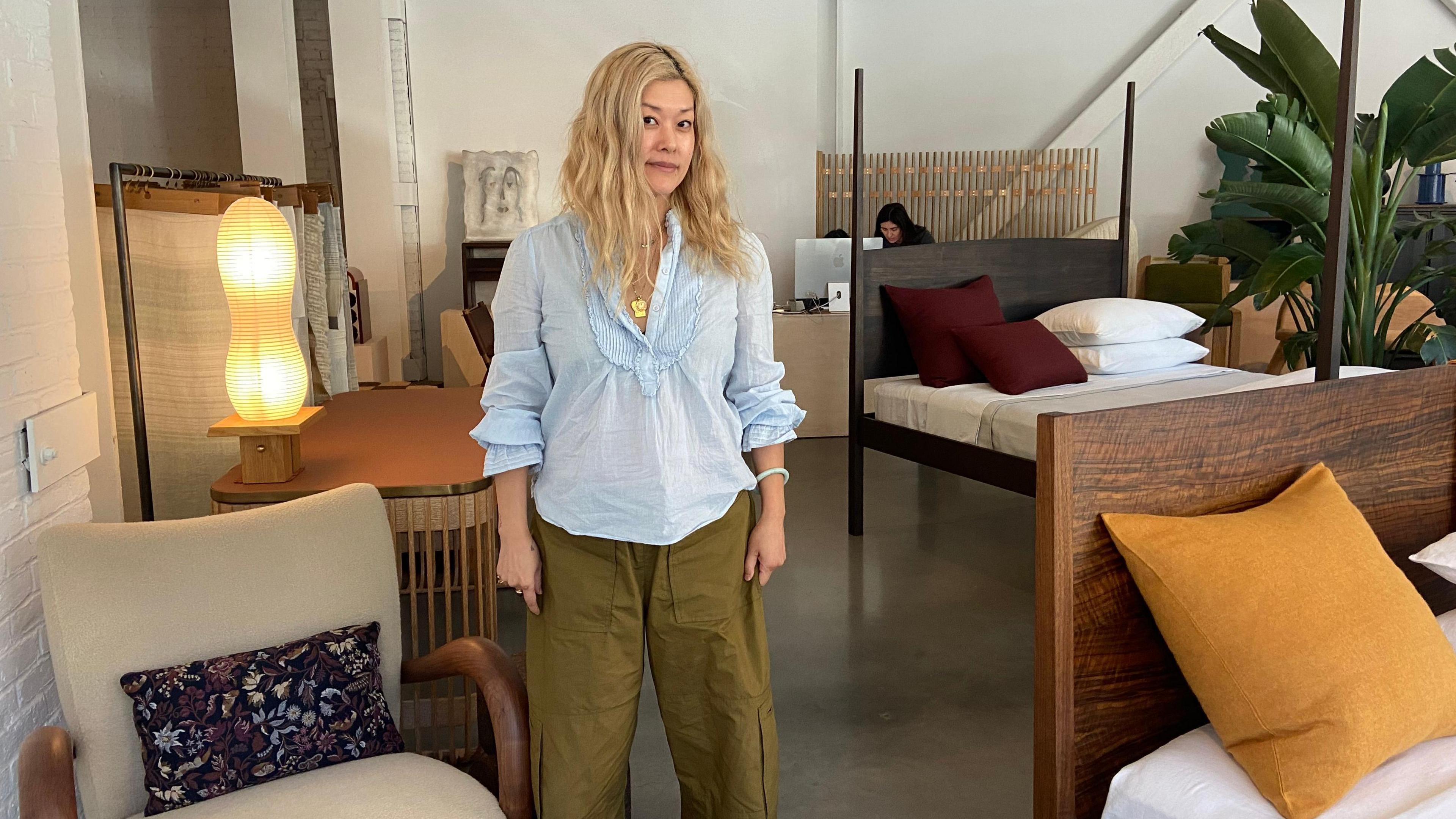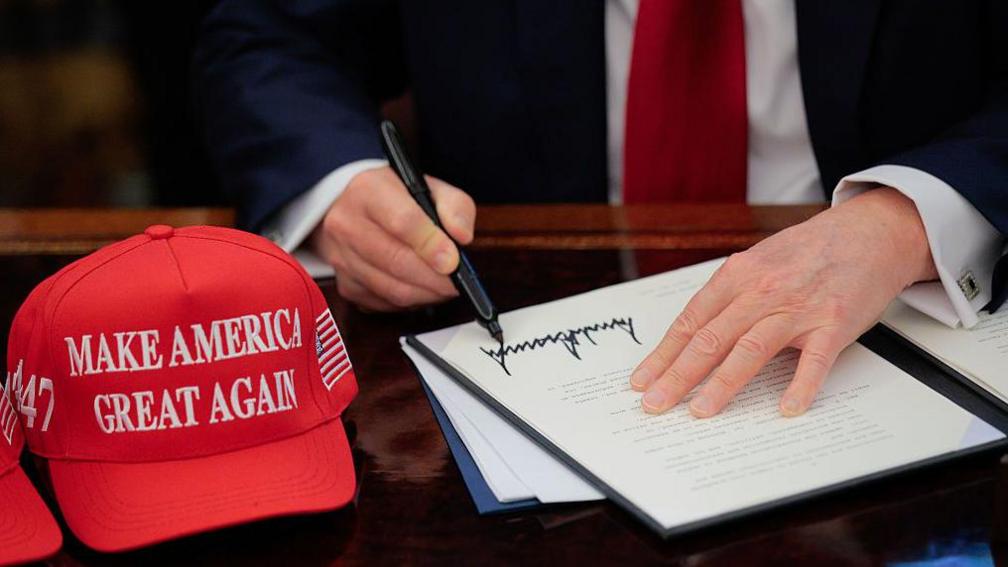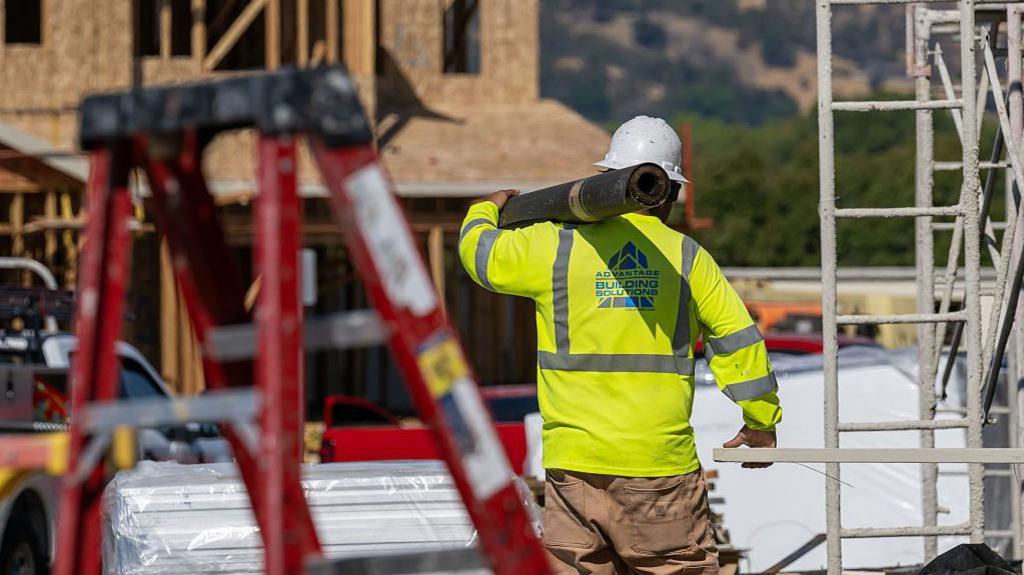My house cost $150,000 more to build even before new tariffs hit

Anthony Cabrera recently completed the build of his house in Hopatcong, New Jersey after several months of construction
- Published
Anthony Cabrera breathed a sigh of relief when, three weeks ago, he bought the last big items - couches - for his newly-built home in Hopatcong, New Jersey.
Mr Cabrera, who started working with a contractor in March to construct the three-bedroom house, was eager to get ahead of a fresh round of tariffs on key building materials and home items that took effect earlier this week.
Mr Cabrera had already seen his initial budget of roughly $300,000 balloon to $450,000 as prices for a range of products, like cabinets from Asia, started going up since the spring.
Earlier this week new US tariffs came in on items needed to renovate your home including imported kitchen cabinets, timber and wooden furniture.
"Tariffs were definitely on my mind throughout the whole process," said Mr Cabrera, who succeeded in finishing his build before the new tariffs, but still noticed rising prices in the run up.
"It was a concern every morning looking at prices, trying to figure out how to control the budget that kept increasing," he said.
Mr Cabrera's experience is one many home buyers, builders and renovators are grappling with.
While the White House says the tariffs will boost domestic manufacturing and protect national security, economists say they could intensify the US housing market's woes by adding to President Donald Trump's previous tariffs and slowing construction.
"We're in a fairly weak position in the housing market to begin with," said Peter Harrell, a visiting scholar at Georgetown Law School. "The last thing an already not great new construction market needs is higher input costs."
He added: "This is adding onto an industry that has already seen its share of tariff increases."
Other levies Trump has imposed this year have included a 50% tariff on steel and a 50% tariff on copper imports, which have raised costs for building materials such as copper piping.

Cabrera has been worried about higher tariffs raising the cost of construction materials and home decor items
Affordability concerns mount
The levies are the latest in a slew of measures that economists warn could keep pushing up prices for people across the US.
A recent report from Goldman Sachs found that US consumers will shoulder as much as 55% of the cost of Trump's tariffs this year. It takes time to raise prices on consumers, the economists noted, and US firms will increasingly pass on costs in the coming months.
Even before the new tariffs took effect this week, furniture companies had been warning about a hit from tariffs. In April, the chief executive of RH, formerly known as Restoration Hardware, reacted with an expletive as he watched his company's stock tumble, in response to a major tariff announcement from the White House.
RH in September said it will face $30 million in new tariffs costs in the second half of this year. The company also delayed the release of a design catalogue, citing uncertainty about pricing due to tariffs.
And executives at the furniture retailer IKEA, which is known for being budget-friendly, warned this week that tariffs might force the company to raise prices. It imports most of the products it sells in the US.

Furniture store owner Jean Lin sells mostly US-made items, but has seen fewer sales and rising costs amid uncertainty
Jean Lin, the founder of a design gallery for furniture and home decor, said she is less exposed to tariffs than some other businesses in her industry. Most of the furniture she sells, in partnership with independent designers, is made in the US.
But her Manhattan-based cooperative, called Colony, has still been feeling a pinch from tariffs since this spring. Homeowners and interior designers have scaled back purchases and projects because of tariff-related uncertainty, which has taken a toll on her sales.
"It's really hard to invest in anything when there's unknowns, especially works of great value or works that are going to go in your home for a long time," Ms Lin said.
Material costs had also been rising, even before the latest round of tariffs. Ms Lin said one US-based mill worker, with whom she is collaborating for an interior design project, imports his materials - and those keep getting more expensive.
That could mean higher prices for consumers down the line.
"The next project he does, whether it's ours or somebody else's, he's going to quote accordingly," she said. "If the construction fees are going up, if the material costs are going up, your architect and your interior designer fees are going to go up as well."
At Stillfried Design in lower Manhattan, prices for furniture made in Germany and Austria rose by nearly 15% this summer to account for broad-based tariffs on European imports and tariffs on steel.
Michael Trubrig, who co-owns the business with his wife, said: "We had to raise prices because we couldn't lower the margin". He does not expect the new furniture tariffs to affect him, because of a trade agreement capping tariffs on the European Union at 15%.
But the broader tariff landscape continues to present a hurdle.
"It's not business-ending, but it's not healthy, either," Mr Trubrig said.
'Yet another unwelcome thing'
High mortgage rates have weighed on new home sales in recent years.
The new tariffs on imported timber, lumber, kitchen cabinets and furniture "will create additional headwinds for an already challenged housing market by further raising construction and renovation costs," Buddy Hughes, chairman for the National Association of Home Builders, said in a statement.
Affordable housing construction could be hit particularly hard, said Elena Patel, co-director of the Urban-Brookings Tax Policy Center. She said that as material costs rise, the cost of new housing development will increase, too, which could in turn prompt developers to rethink low-margin affordable housing projects.
Matthew Walsh, a housing economist at Moody's Analytics, said that cost uncertainty will be the most immediate effect of this week's home building tariffs, especially since the levies are poised to ramp up again in January.
Some economists say the furniture and lumber tariffs, on their own, are unlikely to spell disaster for builders and single-handedly tank the home building market.
"It's not a catastrophe for home builders ," said Jake Krimmel, a senior economist at Realtor.com. "It's yet another unwelcome thing that they have to deal with now."
But, he noted, "these things do add up."
Related topics
- Published7 days ago

- Published7 days ago
